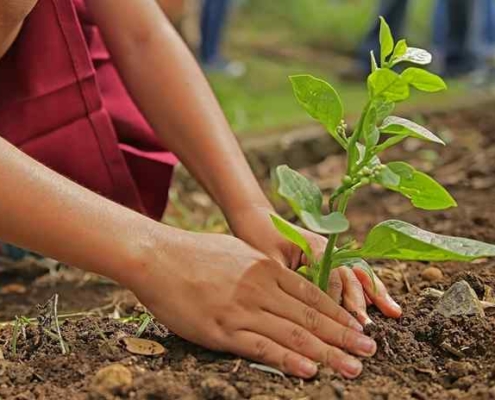A healthy tree starts with a healthy root zone. Tree planting can be done quickly but how its done can have lasting effects on the tree for years to come.
Short cutting the planting process can result in a tree that is short lived or will never reach its true potential. The site assessment and soil preparation is the foundation and most important part of planting.
When And What Should You Plant?
The most favourable time to do a tree planting is spring or fall as the environmental conditions for transplanting are ideal. If planting is done out of recommended seasons extra precautions will be needed to ensure the survival of new plantings.
Edmonton is considered a 4A hardiness zone so when looking for nursery stock it’s important to select a tree that grows well in these conditions.
As well, nursery stock can be shipped in from anywhere so it’s important to source from your local grower for higher likelihood of survival. It’s always best to consult a certified arborist or other horticulture professionals when your planning on planting trees.

Source: www.planthardiness.gc.ca
For a listing of plant hardiness in Alberta see this link.
Planting A New Tree
Think of planting as a process that starts with evaluating the soil condition and ends with after planting care. Soil nutrients, pH and drainage all play a huge role in the survival of the new trees or shrubs.
Determining what type of soil you’re planting in is important so that you are able to make amendments before your tree shows signs of a deficiency. Good drainage helps keep the roots moist but not drowning in water. So knowing the grade of your landscape and where the natural water flow on your land is an important step.
Planting depth is another important factor to consider when planting, the bottom of the trunk flare should be at the or above the finished grade of your landscape. Planting to deep is a common mistake and is difficult to correct as the tree ages.
A trunk flare is defined as the area of transition between the root system and the trunk. (See below)

source:www.seattletilth.org
How To Properly Plant A Tree
The Depth and width of your planting hole are also very important in supporting the initial root growth after planting. Root growth is usually very shallow in the top 6-12 inches of soil so make sure this area has sufficient space to grow. When digging your hole a good rule of thumb is dig an area twice the size of your root zone. Digging the sides of the hole in a slanted fashion will encourage surface roots and give them room to grow and flourish. You also want lots of fresh loose soil in the bottom of your hole so the tree has a soft surface to grow into. Adding things like bone meal to the soft soil can also encourage root growth by adding extra nutrients like phosphorus to be immediately available to the new planting.

Source: https://nfs.unl.edu/publications/how-to-plant-a-tree
Once the hole has been prepared you are ready to plant your beautiful new tree. You will first need to remove whatever type of container you purchased your tree in, some examples are: containerized, fabric bag stock or balled and burlapped. For containerized and other small stock cutting or pulling away the container carefully is best. Balled and Burlapped trees will need to stay contained till it’s placed in its final home. Before burying the tree it is recommended you prune any circling or problem roots now to prevent future issues. You will also want to shave a thin layer of dirt from the sides and bottom of the root ball to help stimulate root growth.
Then place the tree in the center of the hole and as close to vertical as possible, use dirt around the base to help prop the tree into the desired position. You can then start to backfill the rest of the hole, being sure to add the dirt slowly and use the heel of your boot to compress the soil around the root ball as you go. Once the dirt has been added to the grade of the landscape you want to water the hole thoroughly to remove any large voids in the soil. Adding a raised ring of dirt around the perimeter of the hole can also help direct water to the fresh roots helping the tree get the water it will require after planting. A thin layer of wood chips or mulch is then added on top for moisture retention and stakes can be added for support in more windy environments.
Now just because you tree is now planted doesn’t mean the work stops. Trees require a regiment of water in the two years after planting to ensure the root establishment process is solid. To ensure your tree receives an ample supply of water, water bags are useful to use to ensure the water gets absorbed right from the root.


